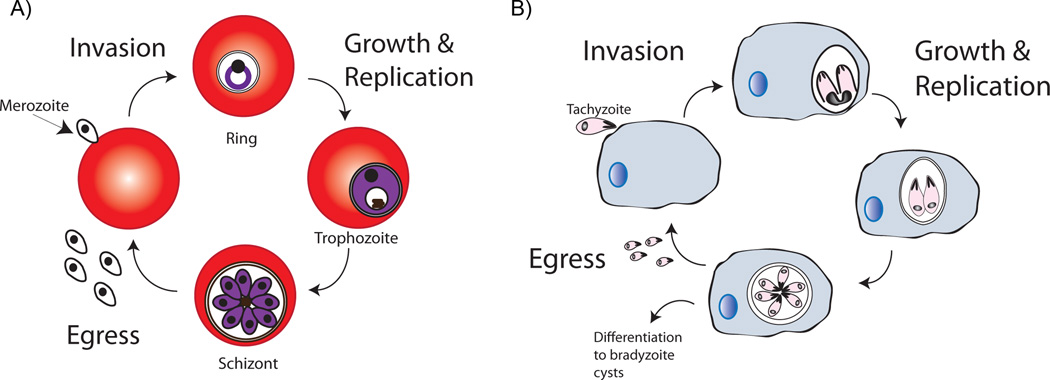Figure 1.
Asexual life cycle of Plasmodium (A) and Toxoplasma B). During invasion, polar zoite cells randomly establish contact to host cells, followed by reorientation of apical end to host cell membrane. A tight junction forms between the parasite and host membrane, and this junction moves from the apical to the posterior end of the parasite. This results in formation of an invagination which eventually forms the parasitophorous vacuole. This is accompanied by shedding of surface proteins. Once invasion is complete, parasites rapidly grow in size in the intracellular environment, and replicate their genome to prepare for cellular division. When cell division is complete, parasites exit host cells in a process known as egress to invade other cells. In Toxoplasma, chronic infection can occur via transformation of the active tachyzoites to the inactive form of parasites known as bradyzoites which form tissue cysts in hosts.

